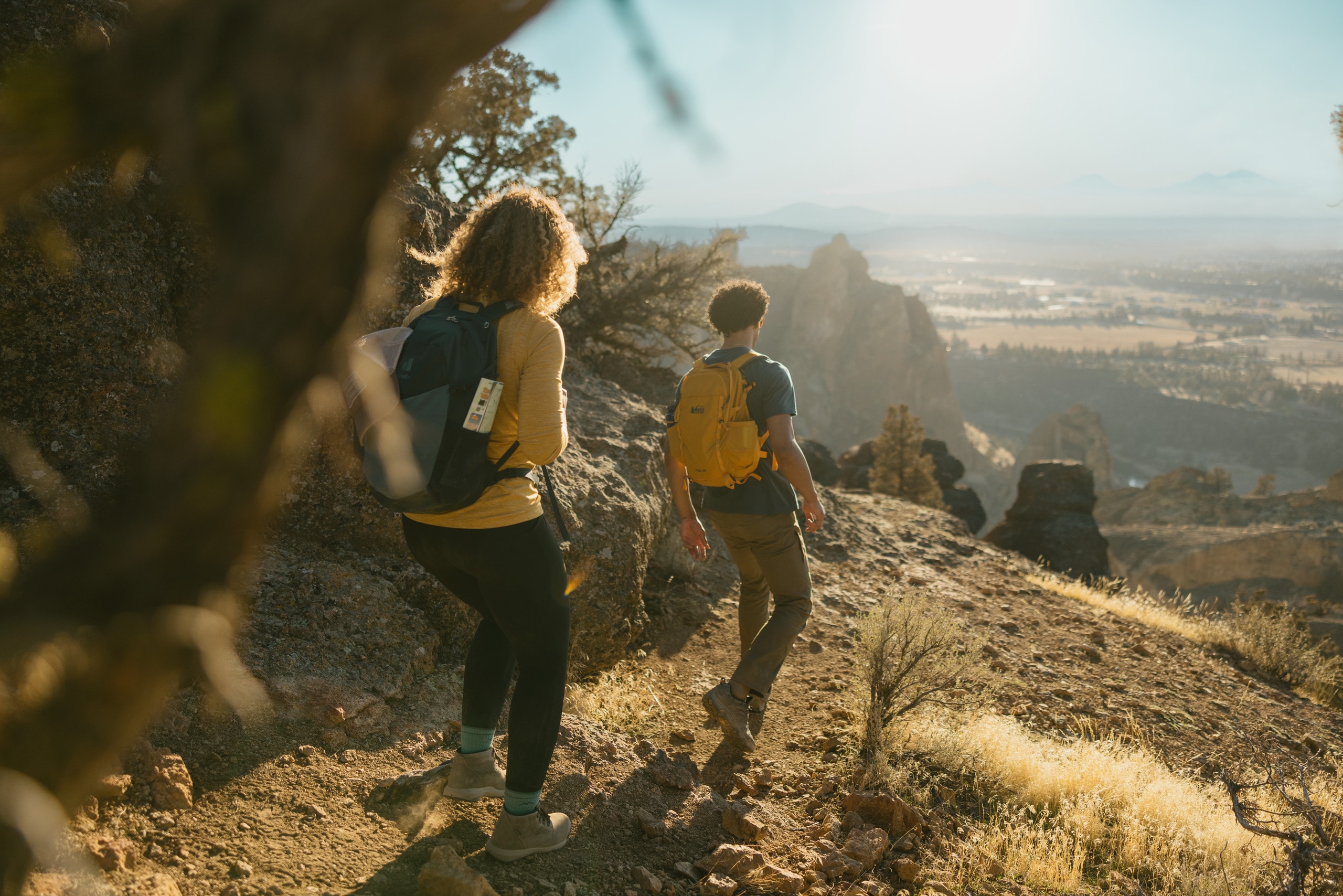For any outdoor activity that involves more gear than you can carry in your pockets for one day, you need a daypack. At first glance, all daypacks may look similar, but they actually have lots of functional differences. To figure out which daypack is best for you, consider these four things:
- Consider Your Activity: How you'll use the daypack can determine a lot about what features you need, whether you're hiking, climbing or cycling.
- Gear Capacity: The size pack you need also depends on how much gear you plan to carry.
- Features: Things like frame type, pack access or adjustable torso lengths affect how the pack works for you.
- Fit: Torso length and hip size are the most important fit factors.
Video: How to Choose a Day Hiking Pack
Consider Your Activity
A quick way to narrow your search for a daypack is to look for one that's designed for the activity you want to use it for, whether you're climbing, hiking, cycling or doing other multiple activities. Here are the main activities that daypacks are built for and some of the features you'll find on them:
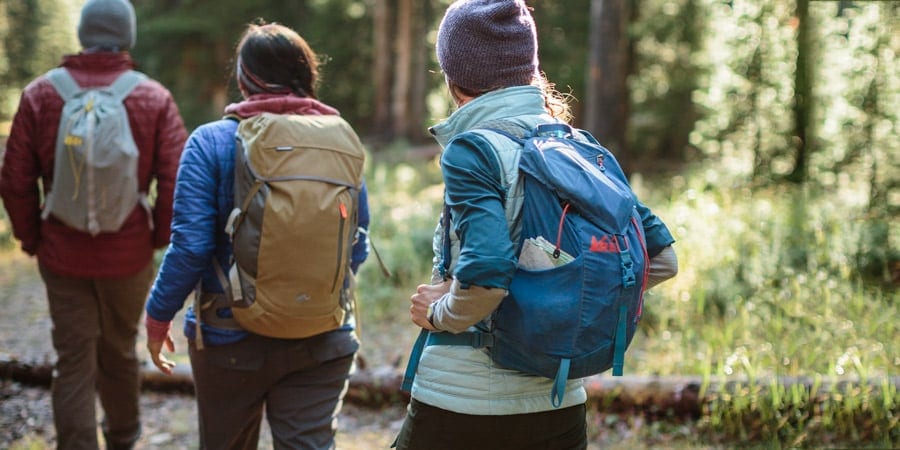
Hiking Daypacks:
- Nearly all are compatible with hydration reservoirs and have water bottle pockets on each side
- Some have straps or loops that let you attach trekking poles or other gear
- Lots of torso size options and different suspension designs help you choose a pack that fits your body
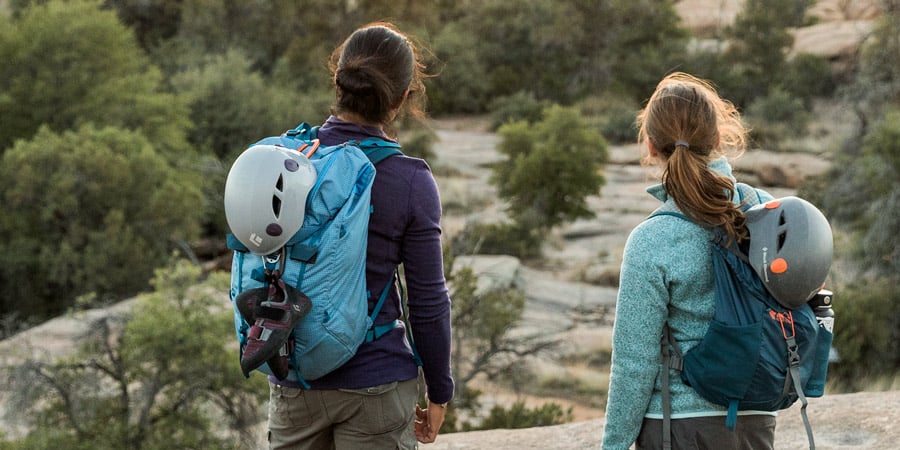
Climbing Packs:
- A narrow profile allows you to move well while climbing with the pack on
- Most include a padded back or a framesheet for comfort with heavier loads; they usually have a frame that helps center weight on the hips
- Include specialized features such as an ice axe loop, crampon patches and daisy chain for lashing gear
- Reinforcements and heavier fabrics help minimize damage from abrasion
- Some climbing packs work for backcountry skiing/snowboarding
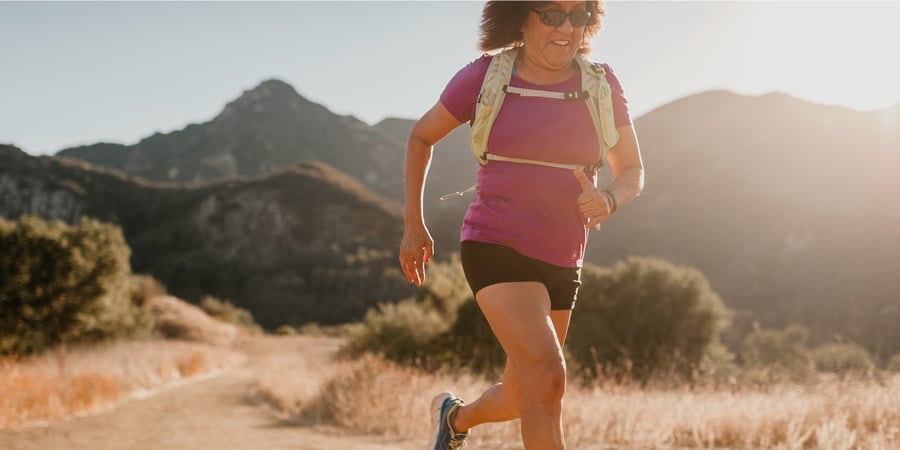
Running daypack:
- A waistpack, water-bottle pack, running vest or small technical daypack are all good choices
- These packs are designed to limit jostling while you run
- Pockets are positioned for easy access to snacks
- Most vests and packs are compatible with hydration reservoirs
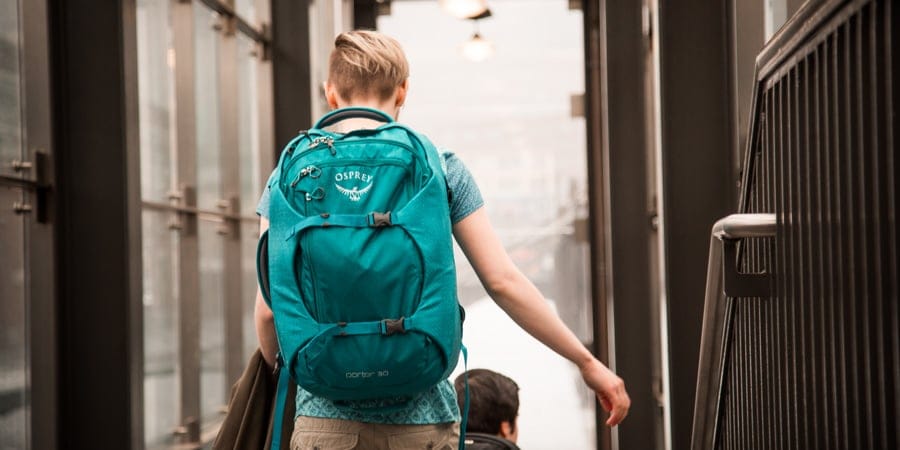
Travel, School, Commuting:
- Many have organization features, such as: a laptop sleeve, dividers, separate compartments and an organizer panel to hold small items
- Many travel bags have a front opening (panel opening) rather than a top opening
- Some have dual zippers with space for travel locks
- Some allow you to tuck straps away to keep them from getting caught in conveyor belts at the airport or train station
- Most are sized to meet carry-on luggage guidelines
- While designed for travel, many are ideal for getting to school or work
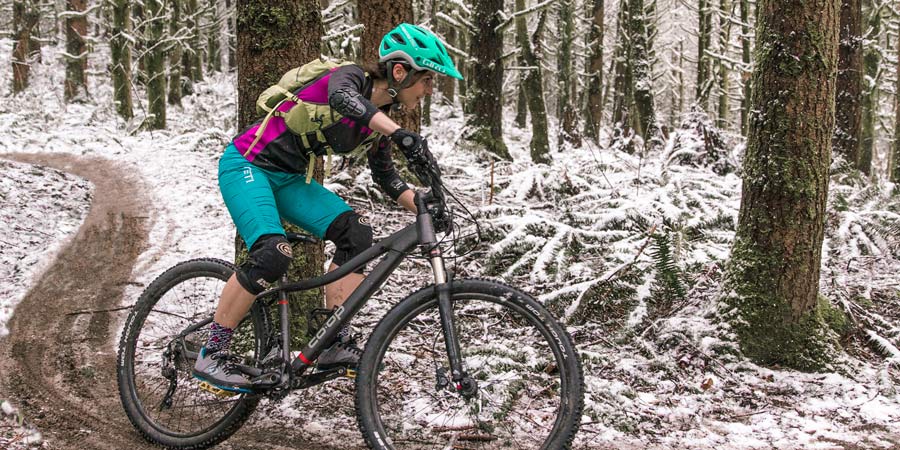
Road Cycling and Mountain Biking:
- Road cycling packs have a compact, low-profile design that keeps them light and stable on your back without creating a lot of wind resistance
- Mountain-biking packs are often a bit larger to accommodate extra gear, clothing and bike tools
- Some are designed for commuting and include features such as a laptop sleeve and organization panel
- Most have low-profile waistbelts that won't interfere with your pedaling
- Many are compatible with hydration reservoirs
Shop Cycling Backpacks and Bags
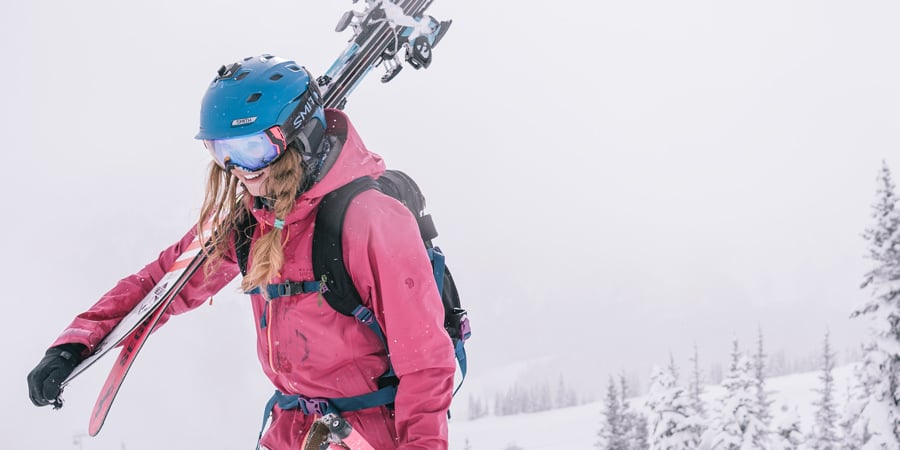
Snowsports:
- Many have a narrow profile to allow you to move around unhindered
- A sternum strap and hipbelt are essential for keeping the pack from swinging around
- All but the smallest packs let you attach skis, snowboard and/or snowshoes to the pack
- Strong fabrics are reinforced where ski edges and crampons rub
- Most have a secure place to keep your snow shovel and probe handy
- Many are compatible with hydration reservoirs and provide insulation to help prevent water from freezing
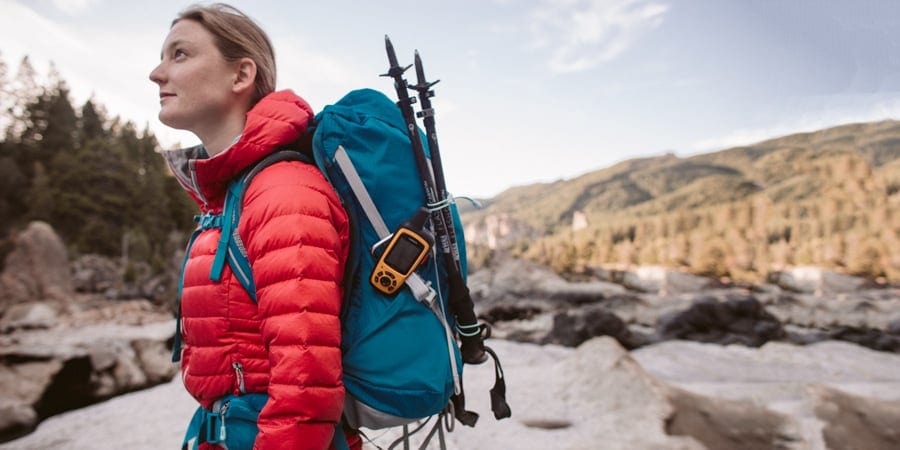
Backpacking:
If you have a minimalist's mentality and the gear to match it, a technical daypack can handle an overnight load for ultralight backpacking or hut-to-hut treks.
- Padded back and hipbelt for comfort
- An internal frame with one or two aluminum stays to accommodate a heavier load
Daypack Gear Capacity
Daypack capacities vary greatly. When you're pondering what size you need, run through a mental inventory of the gear you carry. Can the pack accommodate your favorite jacket? Does it provide enough snack space for the lengths of trips you take? And, is it big enough to fit the Ten Essentials?
Here are some considerations for pack capacity:
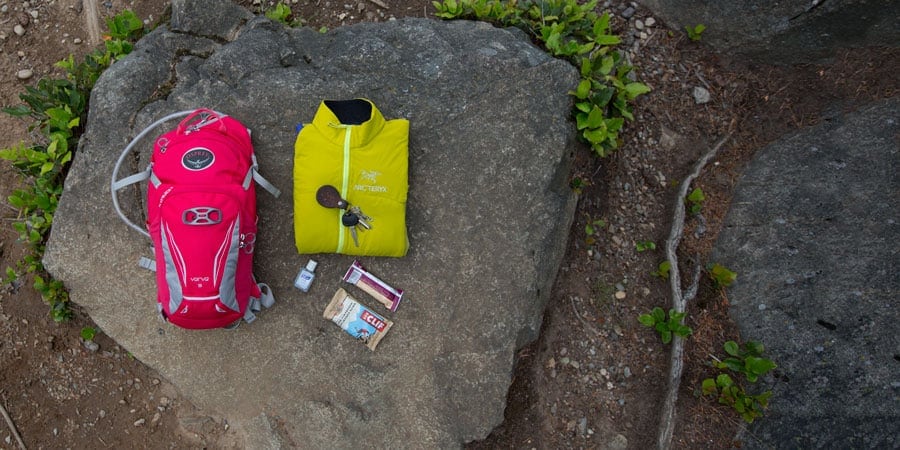
10 liters or less: Most of these small packs are built for lightweight pursuits like running, road biking and very short hikes. Their compact and low-profile design provides room for only a handful of essentials, like an ultralight jacket, some energy bars and your keys.
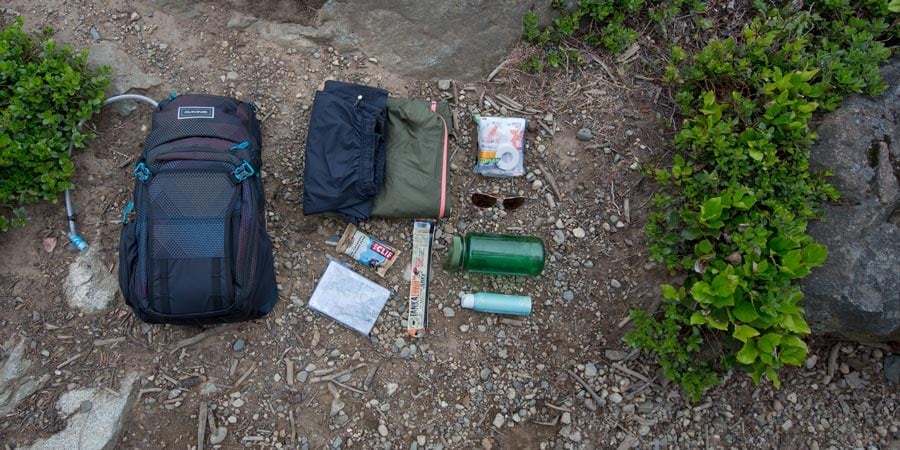
11-20 liter daypacks: These compact packs are often built for hiking, mountain biking, running or travel. Some feature extra pockets for staying organized. Their capacity lets you carry an extra layer, food and gear for day trips.
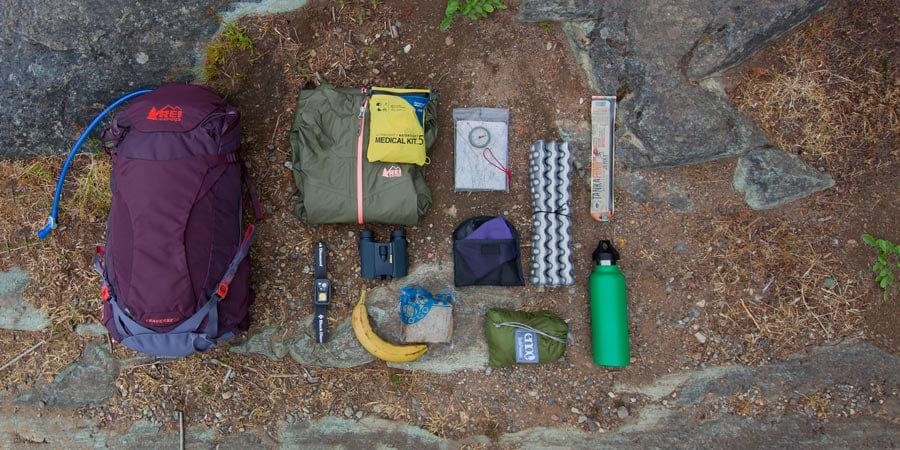
21-35 liter daypacks: This is the sweet spot for most hiking and travel daypacks. There's enough capacity to hold food, clothing and some extras, like a camera and a book.
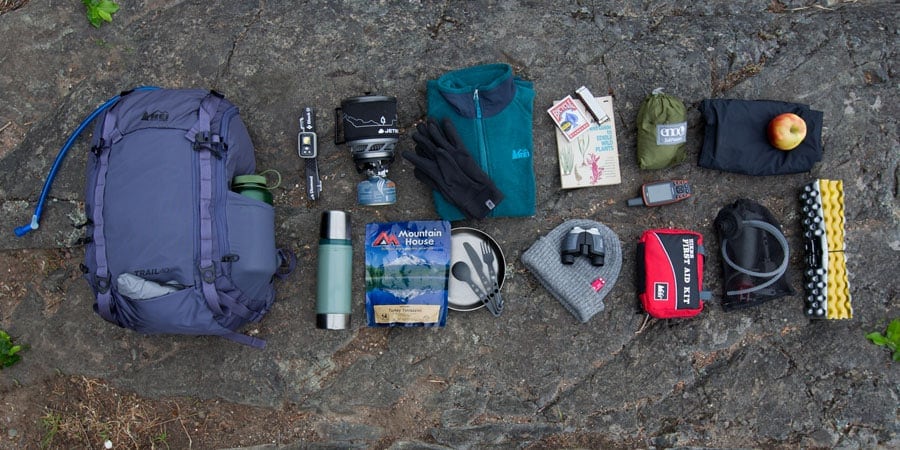
36-50 liter daypacks: These larger packs are ideal for trips that require additional clothing and gear, such as climbing, mountaineering or non-summer hiking. Often, parents who need to carry clothing and gear for their kids will choose one of these packs. Some can possibly be used for overnights if you've invested in ultralight, compact gear.
Daypack Features
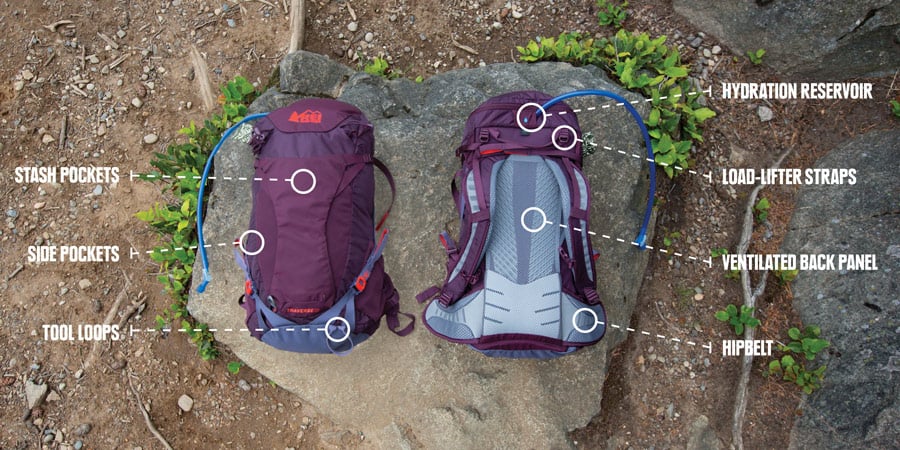
Daypack Frame Type
Internal frame daypacks: Many daypacks have an internal frame that helps support the weight you're carrying. Some packs include plastic framesheets that add lightweight structure. Others have aluminum rods to support the load. The more substantial the frame, the more weight the pack can typically handle.
Frameless daypacks: Frameless packs tend to be lightweight and compact, and they do an excellent job of adapting to the shape of your back. However, their suppleness typically doesn't support weight as well as an internal frame, making frameless packs best for lighter loads.
Pack Access
Top: The majority of daypacks are a top-loading design. The items that you don't need until the end of the day go deep inside. Some top-loaders offer a "floating" (extendable) top lid that allows you to overstuff the pack a bit.
Front: Packs with front access (sometimes called panel access) offer a main storage compartment that is accessed via a U-shaped zipper. Fully opened, one panel falls away like a flap. This makes it easy to load and rummage through when you're searching for something. They're good for light hiking and travel.
Bottom: Some daypacks include bottom access to the interior in addition to a top or front opening. This can be handy for accessing gear or clothing at the bottom of your pack without having to take everything out first.
Side: A side access-point to the interior is an option on a handful of daypacks. This is typically in addition to top or front access. Like bottom access, it makes getting to gear and clothing inside your pack easier.
Hydration Reservoir
Nearly all daypacks have an internal sleeve that you can slip a hydration reservoir into (reservoirs are often sold separately). Daypacks that include a reservoir will typically be labeled as a "hydration pack."
Additional Features
Suspended mesh back panel: Some packs have a ventilated back panel made of mesh that's constructed so the pack rides along a few inches away from you back. This allows a steady flow of air to combat the sweaty-back syndrome that you tend to get when a pack rides directly against your back.
Raincover: If you expect rain on your trip, this is a good item to carry. Some packs include them in a small dedicated pocket.
Sleeping bag compartment: A handful of larger daypacks have zippered access to a sleeping bag compartment at the bottom of the pack. Ultralight backpackers may fill this spot with a sleeping bag, but for day use it can hold other light, compressible gear that you'd like to reach easily.
Daypack Fit
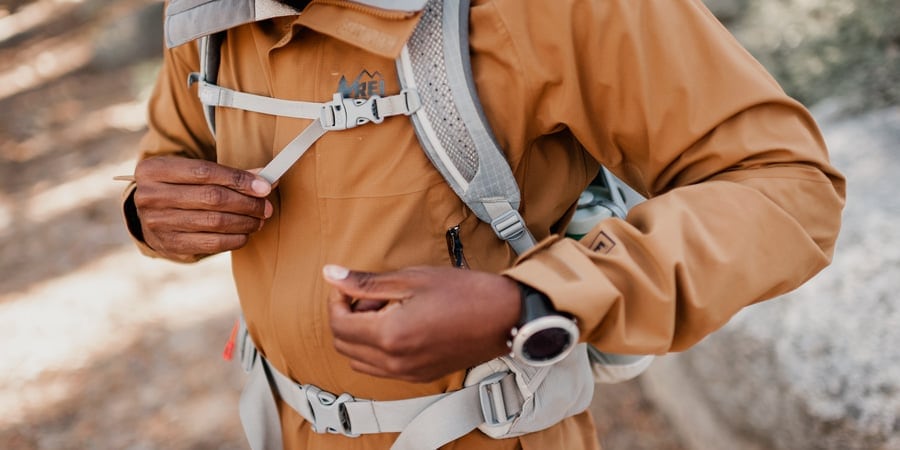
The right daypack fit offers:
- A size appropriate for your torso length (not your overall height)
- A comfortably snug grip on your hips
If you're in a store, you can try on several packs to find one that's comfortable. If you're unable to visit a store, enlist a friend to help you find your torso and hip size.
Torso length: Some packs are available in multiple sizes, from extra small to large, which fit a range of torso lengths. The ranges vary by manufacturer and by gender. Check the product specs tab on REI.com for size details of a specific pack.
While trying packs on, position the hipbelt so the top edge is about one finger width above the top of your hips, then look at how the shoulder straps land on your back and shoulders. If there is a gap at the top of your shoulders, the pack is likely too long for your torso. If the straps wrap more than a few inches down your back before they connect to the pack, the pack might be too short.
Some packs feature an adjustable torso that lets you fine-tune the fit. If you've struggled to find the right fit with other packs, consider one with an adjustable torso. This is also a good idea if you'll be sharing the pack with someone or you're buying a pack for your child who isn't done growing.
Waist size: Hipbelts on daypacks usually accommodate a wide range of hip sizes, from the mid-20 inches to the mid-40 inches. When trying a daypack on, just make sure you can get the hipbelt loose enough or snug enough to fit comfortably around your hips.
Women-specific backpacks: Torso dimensions are generally shorter on these packs than on men's or unisex packs. Hipbelts and shoulder straps are contoured with the female form in mind. Because women's packs have smaller frame sizes, they often work well for young hikers, too.
Additional Backpack Fit Adjustments
Load Lifter Straps: Some larger daypacks include load lifter straps. These are stitched into the top of the shoulder straps, and they connect to the top of the pack frame. Ideally, they will form a 45° angle between your shoulder straps and the pack. When kept snug (but not too tight), they can help prevent the upper portion of the pack from pulling away from your body, which would cause the pack to sag on your lumbar region.
Sternum Strap: This mid-chest strap found on most packs allows you to connect your shoulder straps, which can boost your stability. It can be useful to do so when traveling on uneven terrain where an awkward move could cause your pack to shift to one side and throw you off-balance.
